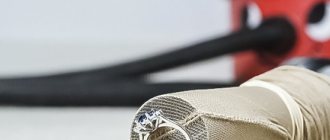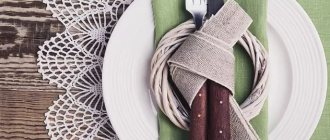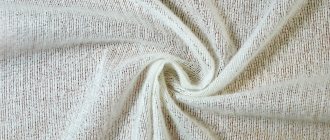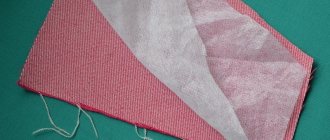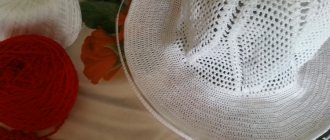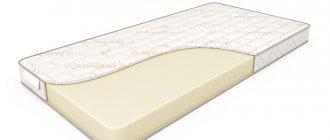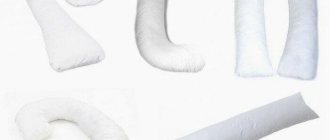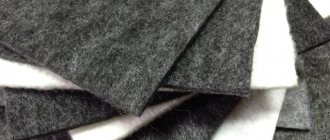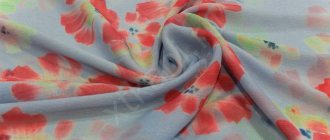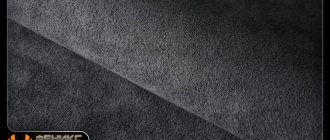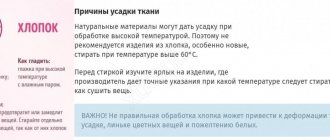Dublerin is a thermal fabric, on one side of which special glue is applied dotted or as a sheet. The choice of fitting density and method of applying the adhesive layer depend on the application.
Used to increase the wear resistance of fabrics and maintain the shape of individual parts. This is not the main, but an auxiliary material, especially in demand in textile creativity, relevant for machine embroidery. Thanks to the adhesive side, it is not difficult to use the doubler, but first things first.
Dublerin analogues
Depending on the type and strength of the main material, thick or thin thermal fabric is used for sewing. This is not only dublerin, but also a number of woven and non-woven materials with similar properties and purposes. You can glue analogs using the same principle.
Adhesive beading
When sewing clothes, adhesive borders are often used as backup accessories, which strengthens the sides, pockets and shelves of jackets. This lining is denser, sold with or without an adhesive side, is used less often when sewing clothes, and is partly considered “morally obsolete.”
Non-woven cushioning materials
This is non-woven and spunbond with cellulose fibers and polyester in the composition.
The choice is up to the seamstress:
- Non-woven fabric does not have transverse or longitudinal threads, so it is easier to work with. There are modifications in density and colors. With careless care or after prolonged wear, the lining wears out and tears. Parts reinforced with non-woven fabric lose their shape and fall out. This is a budget option that can replace dublerin, the main thing is not to go cheap.
- Spandbond is a more reliable replacement with good density and wear resistance. Such accessories are more expensive, more often used for bags, outerwear, jeans, and duplicate the main fabrics.
Adhesive grosgrain tapes
Such fittings are often used to seal the waistbands of skirts, trousers, jeans, shorts, etc. Adhesive tapes vary in length and width and are selected individually for specific clothing. There is less hassle with them even when sewing at home.
Glue webs, mesh, fleece
The lining material has no base, only adhesive threads that melt at elevated temperatures. Cobwebs go well with chiffon and cotton, adhesive mesh is used on denser fabrics, and fleece is a double-sided adhesive fabric. Such fittings are suitable for duplicating the main parts, making them voluminous and massive.
Types and features of doublerin
This lining fabric is glued on one or both sides, or is made without a sticky layer at all. In the latter case, the fittings are carefully laid out and sewn onto the main fabric.
There are such types of doublerin:
- Fabric . On one side there is fabric, on the other there is a sticky layer with a low melting point. Fabric accessories are suitable for strengthening bags, hats, fur and leather items.
- Pile . This is a voluminous, high-density material that stretches slightly on the reverse side. Contains viscose and polyester, used for sewing outerwear and soft toys, for leather.
- Elastic (knitted) . This is a suitable accessory for light clothing that stretches well and retains the original appearance of the item even with everyday wear.
Several types of dublerin are known according to their composition:
- Chiffon . Made on the basis of chiffon, light, transparent and weightless, does not stretch or deform.
- Collared . Made of durable cotton fabric, natural, breathable, with a continuous adhesive layer.
- Corset . Created on the basis of calico fibers, does not stretch, used in interior design for sewing lambrequins.
- Monoelastic . It has a stretch base, elastic in any direction, and after stretching it returns to its original shape. Essential for knitted fabrics.
In some items, such universal fittings duplicate thin fabrics, in others they strengthen dense items, for example, collars in shirts (collar duplerin).
Advantages
The common man is more familiar with cheap and practical non-woven fabric than with dublerin. What it is is clear after studying its characteristics and advantages:
- drapes well;
- does not become thin, does not tear;
- does not peel off from the base;
- has duplicative properties;
- has several density options and a variety of colors;
- eliminates deformation of individual items after washing;
- indispensable for sewing knitwear with lurex and fur;
- extends the service life of the product, be it a coat or a hiking backpack.
Flaws
Before talking about the disadvantages, take a responsible approach to the choice of fittings and select the density that matches the quality of certain products. For example, knitted duplerin should stretch in a direction similar to the main material. If you follow this rule, the number of negative reviews is significantly reduced. One of the disadvantages of the lining is its cost compared to budget non-woven fabric.
What kind of material is this
Lining is necessary when sewing hats, outerwear, suits, shoes, and accessories. There are several options for the adhesive side: polyester, polyethylene or polyamide, which melt well at elevated temperatures.
Professional seamstresses know what dublerin is, and that without it, a garment loses its appearance after the first wash. The lining material goes well with all types of fabrics. Compacted items wrinkle less, do not deform, and last longer. Dublerin adhesive is needed on those elements of clothing that are subject to the greatest load - sleeves, collar, pockets.
Helpful information:
Cooler what kind of fabric?
What kind of fabric is poplin?
How to glue dublerin
Once the main parts are ready and after the fittings have dried, proceed in this sequence.
- Place the elements of the future product on the ironing board and straighten them from wrinkles.
- Place the fittings on top so that the adhesive layer is located at the bottom.
- Use gauze on top for ironing.
- Heat the iron in the “Wool” or “Synthetic” mode, press down the material.
- Check the adhesion to the base material.
- Repeat the procedure if necessary.
Before gluing the dublerin onto the fabric with an iron, remember: the electrical device is applied pointwise, and it is strictly forbidden to move it across the fabric. Otherwise, the fibers melt and folds form. Do not hold the iron for more than 2 seconds, control the melting of the adhesive layer.
